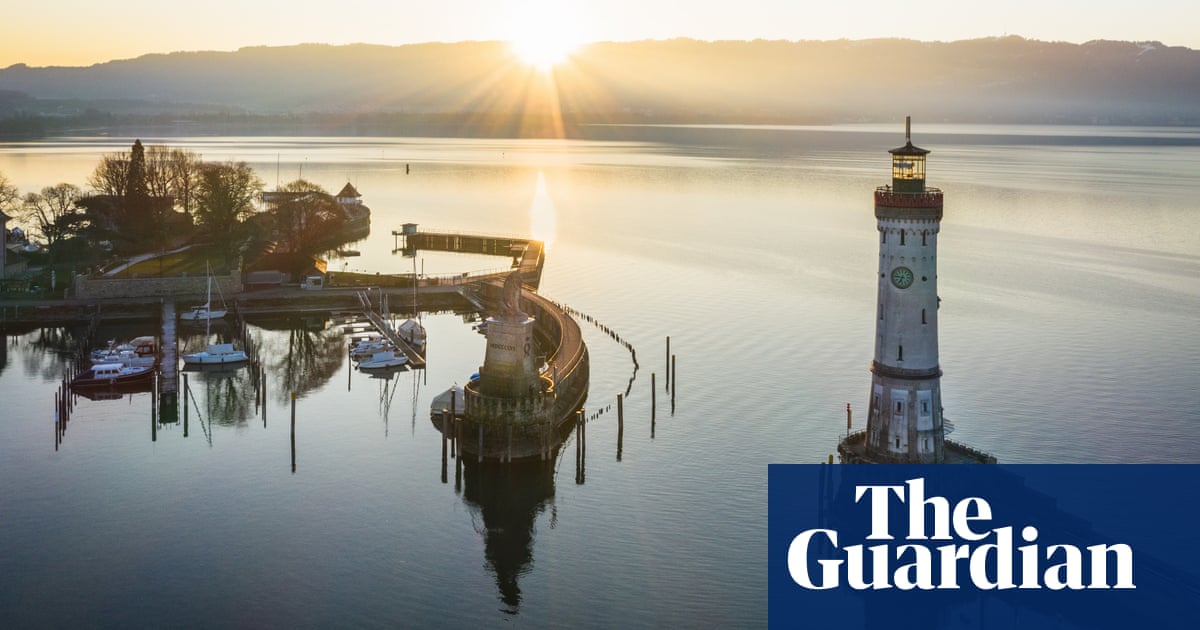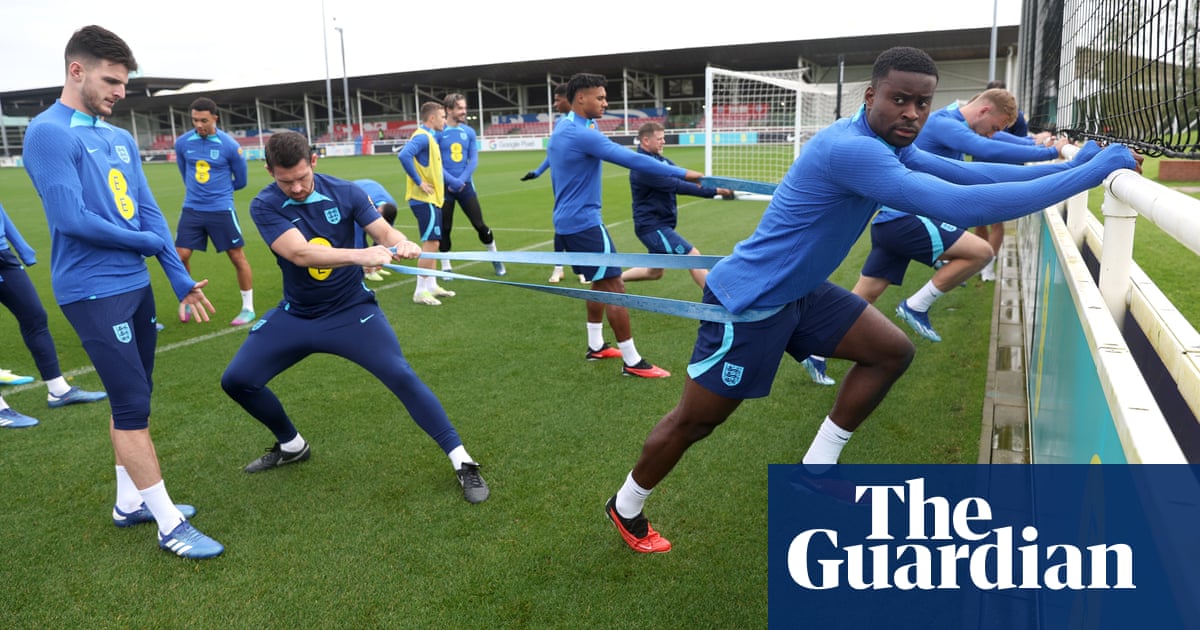
From Munich: chill out by Lake Constance
Of all the ways to explore southern Germany this summer, the most memorable is not by train, bus or hire car but by boat. Lake Constance, nearly 40 times bigger than Windermere and two hours south-west of Munich by public transport, is a wonderful water world ringed by harbour towns, and it makes an idyllic break from the Bavarian capital.
With pomp and pageantry to spare, the medieval gateway town Lindau is the most memorable place to start your exploration. First impressions are a serious business there. Upon arrival, you see the same Germany that travellers saw 200 years ago. The seated lion statue that eyes the quayside is still visible from miles around, as is the chess piece lighthouse and the Mangturm, a Rapunzel tower that colours the skyline with zigzag tile patterns in gold and green.
In the medieval gateway town of Lindau you see the same Germany that travellers saw 200 years ago
On Lake Constance’s German shore, running north-west from Lindau and accessed by the affordable, shoreline-hopping BSB ferry service, is an even older world. There are old vineyards, old churches, old castles and older monasteries, many of which could well outlive Munich’s tower blocks and football stadiums. The delights of sailing and windsurfing on one of Europe’s largest lakes – as well as swimming in it – worked wonders on me when I first visited after the 2006 World Cup.
After enjoying Lindau’s fortified walls, ivy-draped towers, promenade streets and beer gardens, it’s a 90-minute boat trip to Friedrichshafen, 15 miles up the lakeshore. Here there is often a strange, keel-like structure in the sky above the lake. As much a reminder of the first world war and the Hindenburg disaster as it is of Germany’s engineering prowess, the Zeppelin remains the symbol of Friedrichshafen, and the rigid airships whirr visitors on sightseeing tours above Lake Constance daily in summer. The Zeppelin was born here – on 2 July 1900, the blimp’s initial test flight took place over the shore – and its history can be traced at the harbour Zeppelin Museum. From up in the airship, the blue, far below, makes the inland sea look as if it belongs in a Romantic painting by Caspar David Friedrich.
Most people think Germany is for beer drinkers, but Lake Constance is less about the grain and more about the grape. Pinot gris, blanc, noir and local cultivar Müller-Thurgau have revered status here, and the lakeshore’s pitched sides are braided with vineyards and wine hiking trails.
Meersburg, 12 miles west of Friedrichshafen, offers lakeshore taverns, delicious €4 glasses of plonk and a summer coat of vines, as well as an extraordinary, rose-tinged castle. There are plenty of wineries to choose from, but a long favourite is the Staatsweingut Meersburg, a former prince’s pet winery a steep stroll from the quayside.
From Meersburg’s ferry landing, it’s a 20-minute crossing to Mainau, an extravagant island off the lake’s western shore with a party piece baroque castle. It’s owned by a foundation started by the Count of Wisborg, and in summer its vast gardens – with arboretum, swathes of alpine flowers and an Alice in Wonderland vibe – are open to the public. It’s so wild you can lose yourself among the evergreens, and it feels a world away from any pitch, penalty or football score.
Where to stay Hotel Zum Schiff in Meersburg (doubles from €139 B&B) is on the lakeshore, has comfy rooms, a chaotic restaurant and a terrace that’s the best location on the water.
Mike MacEacheran
From Leipzig: visit Saxon Switzerland
It’s best to try to pronounce Sächsische Schweiz after a couple of strong schnapps. Or just cheat and use the less tongue-tying English translation, “Saxon Switzerland”. However you manage to say it, it’s certainly worth taking some time to see it.
A 25-minute train ride from Saxony’s magnificent state capital, Dresden, and two hours from the its biggest city, Leipzig, this picturesque national park rises impressively from the east bank of the River Elbe and is one of the region’s most popular recreational areas. Yet Saxon Switzerland remains fairly under the radar for most non-German visitors.
The park’s scenery has found cinematic fame in films such as Cloud Atlas, The Reader, and The Grand Budapest Hotel
The park is the German section of the broader Elbe Sandstone Mountains, which straddle the Czech border (the larger Czech side is called Bohemian Switzerland), and its generous 340-square-miles are characterised by undulating landscapes, craggy sandstone formations, vertiginous valleys, waterfalls and sweeping ravines.
Discovered as a tourism destination a couple of centuries ago, it captured the imaginations of Romantic artists such as Caspar David Friedrich, who painted his classic Wanderer above the Sea of Fog here.
The park was also one of the birthplaces of rock climbing, a pursuit that continues on the area’s thousand-plus free-standing rock faces and climbing peaks. More recently, the park’s scenery has found cinematic fame in films such as Cloud Atlas, The Reader, and The Grand Budapest Hotel.
But even though it drew 1.6 million overnight stays in 2023, it never feels as crowded as, say, the Bavarian Alps further south – with the exception of the park’s obvious tourist magnet, the Bastei Bridge, an attractive outcrop of sandstone offering sweeping, Instagrammable views across the winding Elbe and surrounding mountains.
Just a short way beyond the bridge, however, is quiet, almost deserted forest and 750 miles of crisscrossing hiking trails and climbing routes. Even the most famous multistage trail, the Malerweg (Painters’ Way), which runs for more than 70 miles – divided into eight official day-hikes that vary from easy to demanding – gets immediately quieter after the initial Bastei section. Deeper into the park, there may be the chance to spot peregrine falcons and black storks, kingfishers and Eurasian pygmy owls, lynx and deer, chamois and beavers.
There are restaurants and accommodation options peppered throughout the park, as well as public transport options for many hikes and even luggage transportation services. For cyclists, there are about 30 miles of mountain bike trails, as well as the more leisurely Elbe Cycle Route, which can be picked up at Dresden and remains reassuringly flat and delightfully curvaceous all the way to the mountains and the Czech border.
The pretty spa town of Bad Schandau, at the foot of the Saxon Switzerland mountains, is one of the park’s main gateways and easily accessible by train from Dresden. A few miles further, reachable by car, bus or train, is the tiny village of Schmilka, which has its own Bio Village – a complex of sustainably built hotels and eco-restaurants with equally excellent access to the park.
Where to stay: Hotel Helvetia (doubles from €229 half-board) has riverside views, a sauna complex, an organic restaurant, daily yoga classes and guided hikes. It’s on the Elbe Cycle Route and close to the Malerweg too.
Paul Sullivan
From Hamburg: head for the North Sea coast
Less than two hours’ drive from the hustle of Hamburg, Sankt Peter-Ording is a popular seaside spa town that also offers untamed nature, as it sits within the Unesco-listed Wadden Sea, one of the world’s largest stretches of wetland. Blurring the lines between water and land, and running from the northern Netherlands across Germany’s north-west coast and up Denmark’s west, this is a panorama that offers visitors a rare glimpse into the cycles of nature.
At low tide, a vast mudflat world is revealed, while at high tide porpoises can be spotted. Away from designated surfing and land sailing zones, photographers and nature lovers come to spot migratory birds (geese, waders, ducks) flying over the salt marshes and dunes on the “east Atlantic flyway” from the Arctic to Africa. The only points of orientation are the occasional stilt houses, a symbol of humanity’s adaptation to this unique natural backdrop.
While the birds gorge on the delicacies in the mudflats, the culinary offerings in Sankt Peter-Ording are equally rich
In this remarkable landscape, Sankt Peter-Ording offers another feature that may appear contradictory to the natural surroundings – cars parked on the beach. This may appear absurd, but is a clever approach to enabling a direct experience with nature while funding conservation efforts. Parking fees go towards the preservation of this ecosystem, a sustainable model that strengthens the connection between people and nature.
While the birds gorge on delicacies in the mudflats, the culinary offerings in Sankt Peter-Ording are equally rich. Salt & Silver is a stilt restaurant run by Johannes Riffelmacher and Thomas Kosikowski, who also have two branches in Hamburg. Recently recommended in the Michelin guide, it offers locally sourced meat and fish cooked with Nordic finesse. Nearby, Yamacito Seafood Bar serves fresh fish sandwiches, while Auntie Clara in the Urban Nature hotel (see below) serves “soul” food such as hotpot curry.
From the Good Times Surfshop in the Beach Motel (doubles from €85), Tobias Seemeier and Katharina Simon organise punk concerts, skateboarding and surfing events that add a youthful vibe to the town. But at the oldest pub, the Thalamegus, innkeeper Lisa maintains the Frisian tradition. Here, Frisengeist, a flambéed grain brandy, is served with a special toast, which is not only a ritual, but a tribute to Frisian hospitality.
Where to stay The Urban Nature hotel (doubles from €69 room-only) pitches itself as “somewhere in between for city kids and nature freaks” and contrasts a modern design with the rugged beauty of the surroundings. There’s a range of activities from morning walks to yoga.
Malte Brenneisen
From Berlin: take a tour of the Spreewald
“Taste the best pickles in town!” beams the ruddy-faced stall-holder, proffering a large gherkin on a stick. I have to admit it’s pretty good – but best in town? That’s a bold statement given that I’m walking along the Gherkin Mile in Lübbenau, the gherkin capital of Germany.
Lübbenau, a market town 60 miles south of Berlin, is also known as the gateway to the Spreewald (Spree Forest). The remarkable landscape of this vast wetland was shaped during the last ice age, when the River Spree split into a labyrinthine network of narrow waterways, creating an inland delta with swathes of meadows interrupted by dense woodland.
As there are more waterways here than roads, the best way to explore is by boat
Over the years, settlers converted the streams into irrigation canals in order to drain the mineral-rich land for farming. This unique and abundantly diverse ecosystem was designated a Unesco biosphere reserve in 1991, so that its thousands of species of plants, trees, birds, insects and mammals could be protected.
Unsurprisingly, this green haven is popular with tourists and with Berliners looking to escape the city. Trains run frequently from Berlin Hauptbahnhof to Lübbenau, taking just over an hour and costing about €23 return with Deutsche Bahn. As there are more waterways here than roads, the best way to explore is by boat. I head to the lively harbour area to join a tour on one of the traditional punts, or Kahns.
This region is home to the Sorb people, a Slavic ethnic minority whose descendants settled here in the sixth century. Sorbian customs, crafts, clothing and language have been fervently preserved here, having survived the repression of the Nazi regime. Women wear long colourful skirts, pretty lace shawls and large embroidered headdresses.
Helped aboard by Dirk, our ferryman, I squeeze on to one of the cushioned benches around a wooden table. Dirk pushes off and tells us about the history of the region while we munch on gherkins and thick black bread.
Our half-day trip meanders past quaint villages full of traditional half-timbered buildings. Dirk navigates under rickety pedestrian bridges and through hand-operated locks with impressive dexterity, while pointing out birds, trees and insects.
Dragonflies flash across the water, and I’m sure I spot an otter sliding slinkily beneath the surface.
We stop at Lehde, a village of just 130 inhabitants, to visit its open air museum (the Freilandmuseum Lehde), which celebrates Sorbian culture. Farmsteads have been rebuilt in the original Sorbian style, and I wander around farms from the 18th and 19th centuries, seeing how these rural communities used to live. It’s a fascinating insight into the customs and traditions of this small community. At harvest time, the whole community would come together to pick little cucumbers to pickle. It’s the mineral-rich soil, high humidity and iron oxides in the water that make the Spreewaldgurken the perfect pickle.
So unique are this region’s pickled cucumbers, they have achieved Protected Geographical Indication status; the humble Spreewaldgurken is the champagne of the pickle world.
Exploring independently is easy too: there are kayaks and canoes to hire for about €30 a day or bikes from about €15, to paddle or cycle around the tree-canopied canals.
A picturesque 160-mile bike trail, the Gurkenradweg, winds through the Spreewald. After spending a sweaty hour or so on a bike from Lübbenau, cyclists can stop off for a gherkin ice-cream (yes, really) at the Cafe Kleinod in Burg, or a few bottles of gherkin beer.
Deep in the forest a mile or so north of Lehde and accessible only on foot or by bike or boat, Gasthaus Wotschofska is one of the oldest restaurants in the area and has a shady waterside terrace, and large beer garden, naturally.
Where to stay Guesthouse Bludnik (doubles from €130 B&B), on the three-mile circular walk between Lehde and Lübbenau, makes a perfect base. This beautifully restored wooden building is right on the water and has boats and bikes to hire.












